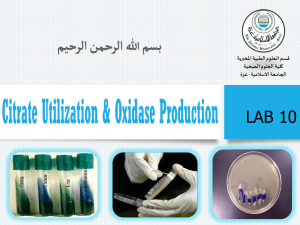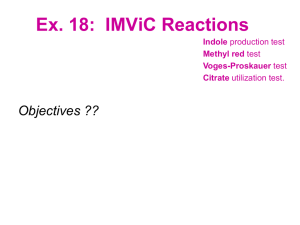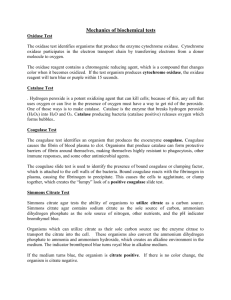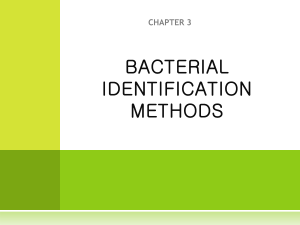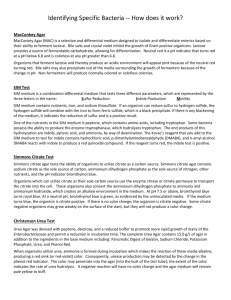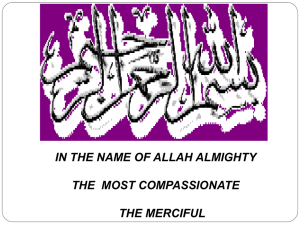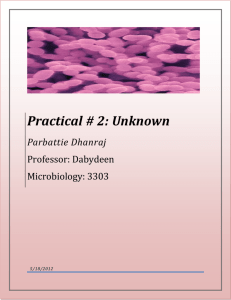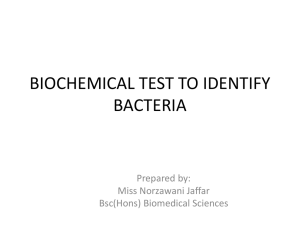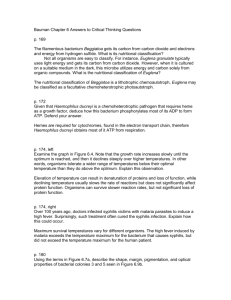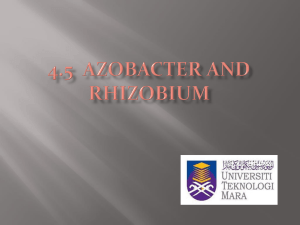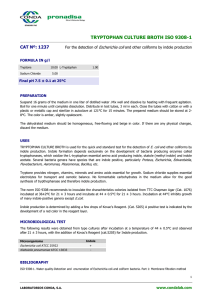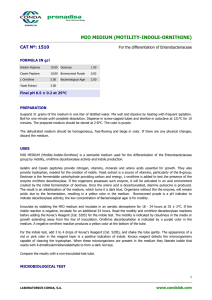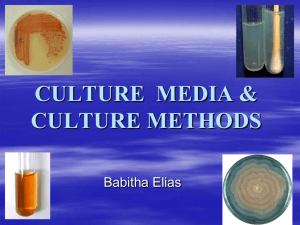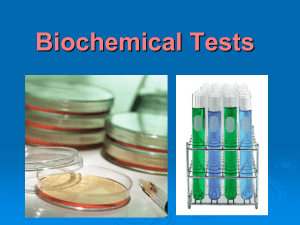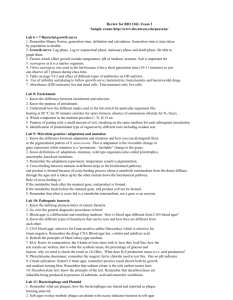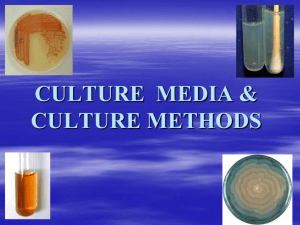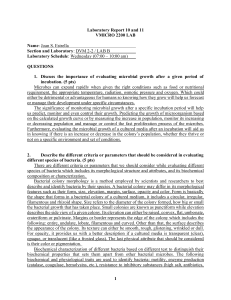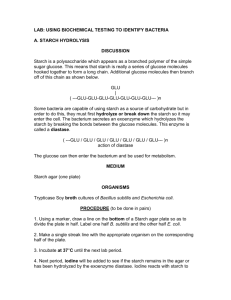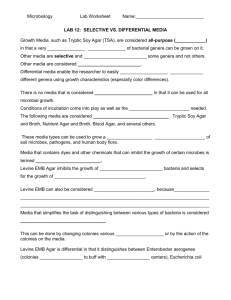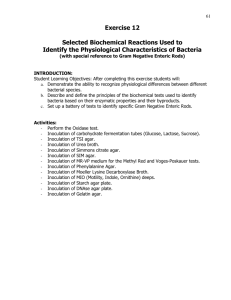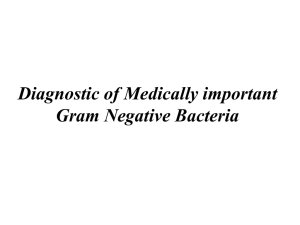BACTERIAL IDENTIFICATION METHODS
advertisement
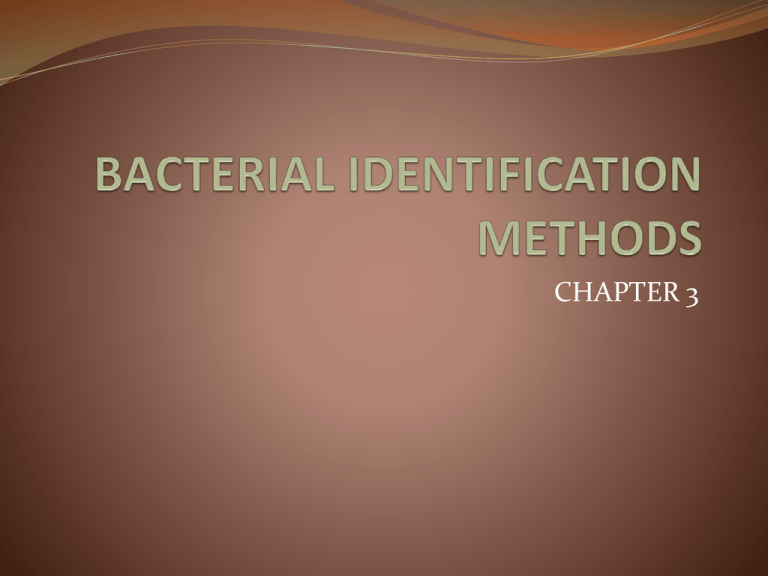
CHAPTER 3 Content purification of cultures morphological and pureculture studies biochemical tests Purification of cultures The only way to purified culture are by getting a pure culture. Have a control procedure in collecting specimen, preparing media, microbiological tecniques, staining and reagents and equipment used. Collecting specimen Sterile procedure using a correct media for transportation and stock. Main source for bacteria should be microbial food. Which are?? The transport media used to preserve and ensure the viability of bacteria during the transportation period Besides also provide a particular temperature for the viability of bacteria Crucial for cerebrospinal fluid, blood culture and fecal specimens, etc. Preparation of media The media should be packed well to prevent from leakage and breaks, protected from moisture and sunlight and excessive heat The expiry date should be noted and the instruction of storage should be followed The mix bacterial colonies should be sub cultured until the culture are purified the bacterial colony characteristic should only derive from a single colony Pure colony Morphological and pure culture studies In nutrient agar In MacConkey agar In MacConkey agar In Blood agar 3 types of hemolysis Biochemical tests Catalase test Oxidase test Coagulase test Sugar fermentation test MRVP test Indole test Citrate test Motility test H2S test Catalase test Produce bubble just after attaching the bacteria to the reagent To differentiate staphylococci and streptococci Oxidase test Have 2 methods:Filter paper/Sterile swab To help identify Vibrio, Neisseria, Pasteurella and Pseudomonas sp. Oxidase enzymes oxydize phenylenediamine. Deep purple colour on reagent paper Oxidase test Coagulase test To identify S.aureus The enzyme coagulase clots plasma Tube : fibrin clot Slide: clumping of bacterial cells Sugar fermentation test Glucose test Maltose test Sucrose test Lactose test Some will appear with gas production Voges-Proskauer test To differentiate enterobacteria Organism ferments glucose with acetoin production. Acetoin is oxidised to diacetyl which reacts with creatine Brick red colour develop slowly Methyl Red test To differentiate enterobacteria Org. ferment glucose, producing sufficient acidity in buffered medium to give a colour change of indicator Brick red medium Indole test Using Kovac reagent. To differentiate Gram negative rods, especially E.coli Tryptophan is broken down wt the release of indole which reacts wt dimethylaminobenzalde hyde Reddening of strip or medium Indole test using other reagent Citrate test To differentiate enterobacteria from other bacteria Org uses citrate as its only source of carbon, producing an alkaline reaction wt colour change indicator Blue and turbid medium Motility test Please do revision for your 1st test..next week!!
